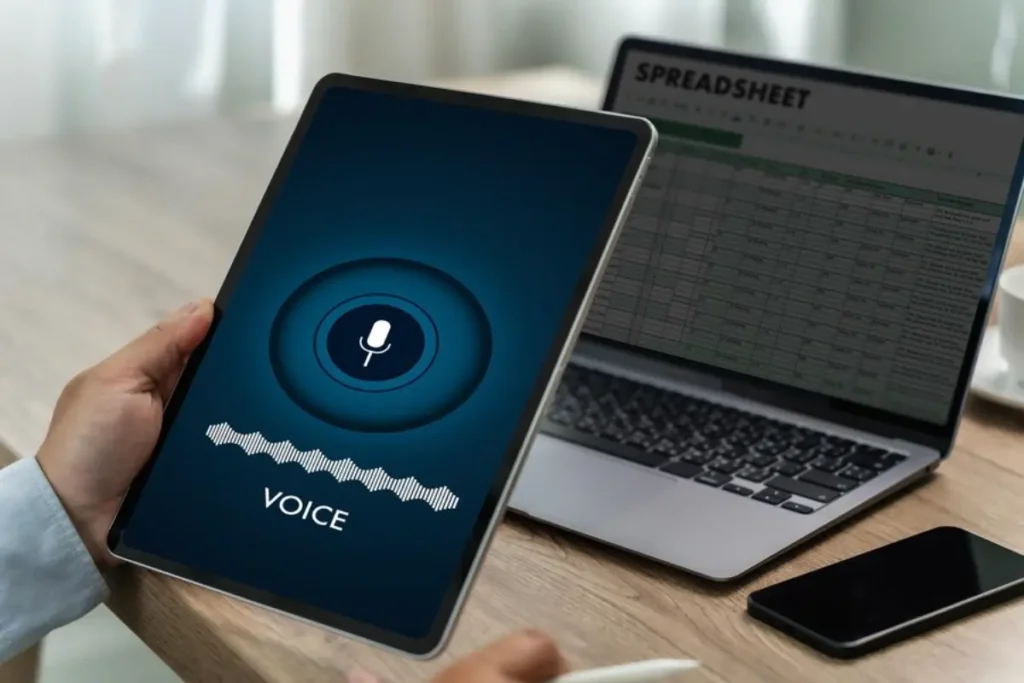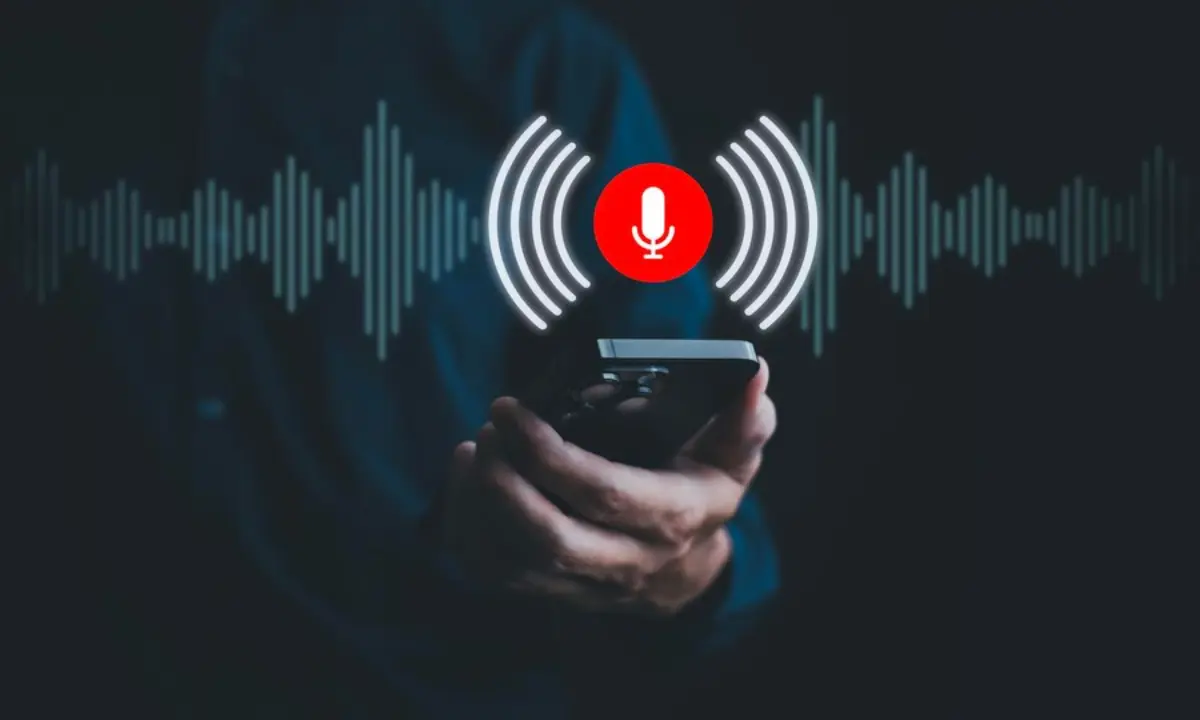The E-commerce Blog

Voice-to-Text: Enhancing Communication with AI
Imagine you’re driving to work, and a brilliant idea for a project pops into your head. You can’t type it out — you’re on the road. But what if you could just speak, and your phone would capture every word perfectly?
Thanks to modern voice recognition technology, this isn’t just possible — it’s becoming part of daily life.
From journalists and doctors to busy professionals and students, more people are embracing smart dictation tools to capture thoughts, transcribe meetings, and communicate more efficiently. What was once clunky and error-prone is now fast, intuitive, and surprisingly accurate.
In this post, we’ll explore how AI transcription services and voice-to-text tools are changing the way we communicate. Whether you’re looking to save time, boost productivity, or stay more organised, there’s something here for everyone.
What Is Voice-to-Text Technology?

Voice-to-text, also known as speech-to-text or automatic transcription, refers to software that converts spoken language into written text using AI-powered voice recognition technology.
It works by:
- Listening to your voice in real time
- Analysing the audio with machine learning algorithms
- Producing a readable, editable transcript almost instantly
Early versions struggled with accents, speed, or background noise. But today’s tools are smarter, faster, and far more accurate, thanks to advances in artificial intelligence and natural language processing.
Why Voice-to-Text Is a Game-Changer
Typing can be slow. Writing by hand? Even slower. Speaking, however, comes naturally — and it’s much quicker.
Key benefits:
- Save time: Speak 3–4 times faster than you type
- Capture ideas on the go: No keyboard required
- Improve accessibility: Ideal for those with physical impairments or learning differences
- Boost productivity: Transcribe meetings, lectures, or interviews in minutes
- Organise better: Turn voice memos into searchable notes
Whether you’re a student recording lectures or a CEO dictating emails, voice-to-text gives you freedom and flexibility.
How AI Transcription Services Work
Modern AI transcription services use large datasets, neural networks, and real-time speech models to understand and convert speech.
They don’t just recognise words — they understand context, pauses, accents, and even punctuation. Many services now support:
- Speaker identification
- Timestamping
- Language translation
- Formatting for subtitles or captions
- Live transcription for calls and meetings
This blend of speed and intelligence makes them far more powerful than manual transcription — and more accessible than ever.
Top Smart Dictation Tools You Should Know
Here’s a look at some of the leading smart dictation tools and AI transcription services on the market today.
1. Otter.ai

- Live transcriptions with speaker identification
- Integrates with Zoom, Google Meet, and Microsoft Teams
- Offers notes, summaries, and searchable transcripts
- Free tier with paid upgrades
Best for: Professionals, students, and teams.
2. Google Voice Typing
- Built into Google Docs
- Simple, effective, and free
- Works on desktop or mobile
- Supports multiple languages
Best for: Casual users and content creators.
3. Rev AI
- Offers both AI-generated and human-edited transcripts
- High accuracy with noisy audio
- Used for podcasts, interviews, and media production
- Pay-as-you-go pricing
Best for: Journalists and content professionals.
4. Descript
- Combines transcription with podcast and video editing
- Edit audio by editing the text
- Automatic speaker detection and screen recording
- Free basic plan with pro features available
Best for: Podcasters, video editors, and creators.
5. Dragon NaturallySpeaking

- Advanced speech recognition software
- Custom voice commands and dictation macros
- High accuracy with specialised vocabularies (legal, medical, etc.)
Best for: Power users and industry-specific professionals.
Real-Life Examples of Voice-to-Text in Action
Emma, the university student:
Emma records her lectures using Otter.ai. Instead of scribbling notes, she listens fully and reviews clean, timestamped transcripts later — even searching for key terms like “exam topics” or “research methods”.
Dr. Patel, the GP:
Using Dragon Medical One, Dr. Patel dictates patient notes during consultations. The tool formats them automatically, saving time and improving documentation accuracy.
Daniel, the remote team lead:
During team Zoom calls, Daniel uses Otter.ai to generate meeting minutes in real time. Team members can highlight key points, add comments, and revisit action items — no more guessing who said what.
Use Voice Recognition Technology Effectively
Like any tool, it works best when you use it the right way. Here are a few quick tips to improve accuracy and efficiency:
Speak Clearly and Steadily
Avoid mumbling or rushing. Pause between ideas to help with punctuation.
Use a Quality Microphone
Your laptop’s built-in mic might work, but a good headset or external mic will give better results.
Find a Quiet Space
Background noise reduces accuracy. If you’re recording, choose a quiet room or use noise-cancelling features.
Review and Edit
No AI tool is 100% perfect. Skim through your transcript and make quick edits before using it professionally.
How Voice-to-Text Is Changing Workflows
Here’s how different industries are benefiting from this technology:
Education
- Record lectures for later review
- Support students with dyslexia or ADHD
- Offer captioned learning materials for accessibility
Business
- Transcribe client calls and meetings
- Dictate reports, emails, or memos on the go
- Create searchable archives for compliance
Media and Content Creation
- Turn interviews into blog posts
- Subtitling for videos and podcasts
- Auto-generate show notes and summaries
Legal and Medical
- Dictate case notes or patient records
- Comply with documentation regulations
- Use field-specific vocabulary with high accuracy
Accessibility and Inclusion: A Quiet Revolution
For many, voice recognition technology is more than a productivity hack — it’s a lifeline.
People with physical disabilities, repetitive strain injuries, or neurological conditions often struggle with typing. Voice-to-text tools allow them to:
- Write emails
- Participate in work
- Create content
- Stay independent
AI isn’t just about speed — it’s about giving everyone a voice, literally and figuratively.
Potential Drawbacks (and How to Work Around Them)
Of course, voice-to-text isn’t perfect. Here’s what to watch out for:
Common Challenges:
- Accent bias: Some tools struggle with certain accents or dialects
- Privacy concerns: Transcripts may be stored on third-party servers
- Errors in complex vocabulary: Especially in technical or legal fields
- Misinterpretation of tone: Sarcasm or nuance may not always translate
Workarounds:
- Choose tools that offer custom vocabulary or domain-specific models
- Use secure platforms for sensitive data
- Always review before sharing
- Provide feedback to the AI — most tools improve over time
What’s Next for AI Transcription and Voice Tech?
The future is bright — and surprisingly hands-free.
Here’s what we’re already starting to see:
- Real-time language translation alongside transcription
- Emotion detection and tone analysis in customer support
- Voice commands for full workplace automation
- AI notetakers that summarise meetings and send follow-ups instantly
In the next few years, expect voice tech to move beyond your phone — into cars, appliances, AR glasses, and workplace tools. Voice will be everywhere.
Talk to Work Smarter, Not Harder
You don’t have to type every thought, write every note, or manually transcribe every call. With today’s AI transcription services, smart dictation tools, and voice recognition technology, speaking your mind has never been more efficient — or more useful.
Whether you want to stay productive, improve accessibility, or just save time, voice-to-text can change the way you work, learn, and create.









